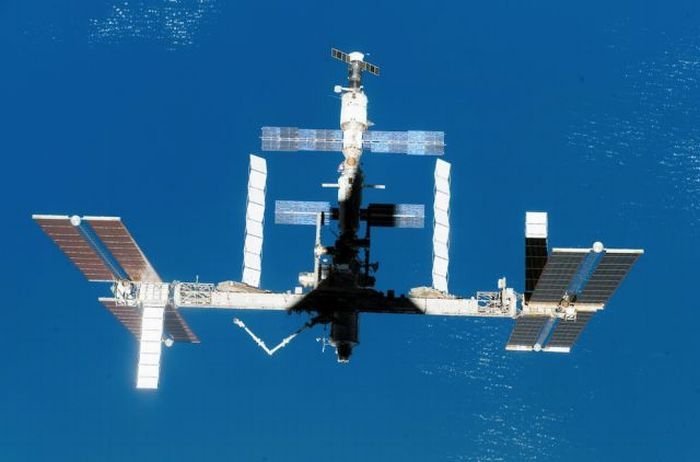|
|
Spacewalk
|
As they had with the first satellite and first man in space, the Soviets again stunned the world on March 18, 1965 with the first EVA (commonly referred to as a "space walk") performed by Alexey Leonov from the Voskhod 2 spacecraft, for 12 minutes outside the spacecraft. Leonov had no means to control his motion other than pulling on his 50.7-foot (15.5 m) tether. After the flight, he claimed this was easy, but his space suit ballooned from its internal pressure against the vacuum of space, stiffening so much that he could not activate the shutter on his chest-mounted camera.
At the end of his space walk, the suit stiffening caused a more serious problem: Leonov had to re-enter the capsule through the inflatable cloth airlock, 3.96 feet (1.21 m) in diameter and 8.25 feet (2.51 m) long. After his spacewalk, he improperly entered the airlock head-first and got stuck sideways. He could not get back in without reducing the pressure in his suit, risking "the bends". This added another 12 minutes to his time in vacuum, and he was overheated by 1.8 °C (3.24 °F) from the exertion. It would be almost four years before the Soviets tried another EVA. They misrepresented to the press how difficult Leonov found it to work in weightlessness, and concealed the problems encountered until after the end of the Cold War.
The first American spacewalk was performed on June 3, 1965 by Edward H. White, II from the second manned Gemini flight, Gemini 4, for 21 minutes, on a 25-foot (7.6 m) tether. White was the first to control his motion in space with a Hand-Held Maneuvering Unit, which worked well, but only carried enough propellant for 20 seconds. White found his tether useful for limiting his distance from the spacecraft, but difficult to use for moving around, contrary to Leonov's claim. However, a defect in the capsule's hatch latching mechanism caused difficulties opening and closing the hatch, which delayed the start of the EVA and put White and his crewmate at risk of not getting back to Earth alive.
No EVA's were planned on the next three Gemini flights. The next EVA was planned to be made by David Scott on Gemini 8, but that mission had to be aborted due to a critical spacecraft malfunction before the EVA could be conducted. Astronauts on the next three Gemini flights (Eugene Cernan, Michael Collins and Richard Gordon), performed several EVA's, but none was able to successfully work for long periods outside the spacecraft without tiring and overheating.
|
|









